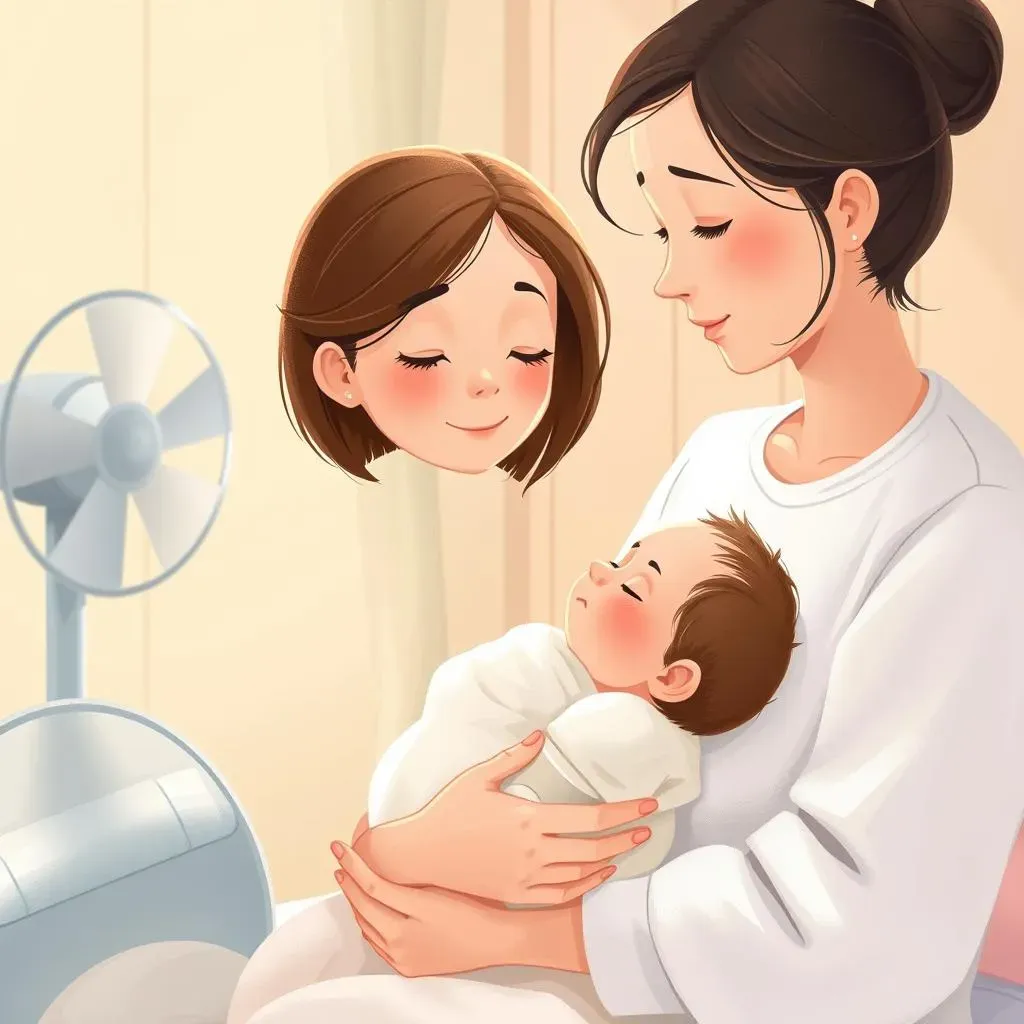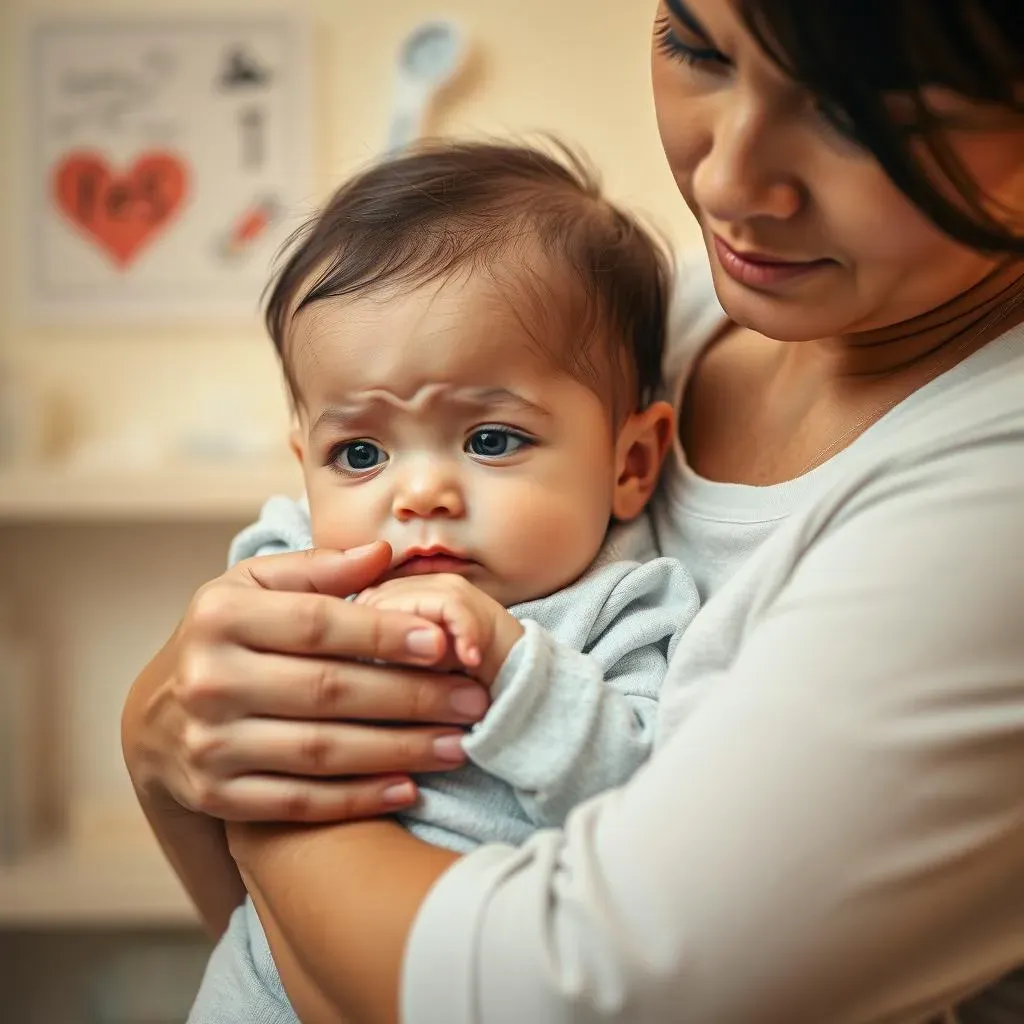Table of Contents
When your baby's forehead feels like a furnace, panic can set in fast. Every parent wonders, "Can I put a cold towel help fever for baby?" It's an age-old question with a mix of opinions. Fevers in babies are scary, but they're often just a sign that their little bodies are fighting off an infection. This article breaks down what you need to know about fevers, how to spot the signs, and whether a cold compress is a safe and effective way to bring down the heat. We'll explore the truth about using cold towels, offering practical advice on safer, more comfortable ways to care for your little one. From hydration tips to when it's time to seek professional help, we've got you covered. Let's dive in and equip you with the knowledge to confidently navigate those feverish moments, ensuring your baby's comfort and well-being every step of the way.
Understanding Fevers in Babies: Symptoms and When to Worry
Understanding Fevers in Babies: Symptoms and When to Worry
What Exactly is a Fever?
so your baby feels warm. But what's a fever, really? It's basically your baby's body cranking up the thermostat to fight off an infection. Think of it as the body's natural defense system kicking into high gear. Most of the time, fevers are caused by viruses, like the common cold or the flu. Sometimes, they can be a sign of a bacterial infection, like an ear infection or a UTI. A fever itself isn't usually dangerous, but it's a signal that something's up.
It's super important to take your baby's temperature the right way. For babies under 3 months, a rectal temperature is the most accurate. Over 3 months, you can use an armpit (axillary) or ear (tympanic) thermometer. Just make sure you're using the thermometer correctly and following the instructions. A temperature of 100.4°F (38°C) or higher is generally considered a fever.
Spotting the Signs: Beyond the Thermometer
While a thermometer gives you a number, your baby will give you other clues. Keep an eye out for these common fever symptoms:
- Feeling warmer than usual to the touch
- Flushed cheeks
- Sweaty or clammy skin
- Irritability or fussiness
- Lethargy or decreased activity
- Poor feeding
- Glassy eyes
Not every baby will have all these symptoms, and some might have others. Trust your gut. If your baby just doesn't seem right, even if the temperature isn't super high, it's always best to check in with your pediatrician.
When to Really Worry: Red Flags to Watch For
Most fevers are harmless and will go away on their own with some TLC. However, some situations require immediate medical attention. Call your doctor right away if your baby:
- Is under 3 months old and has a fever
- Has a fever over 104°F (40°C)
- Is having difficulty breathing
- Is unusually sleepy or unresponsive
- Has a seizure
- Has a stiff neck
- Has a rash
- Is showing signs of dehydration (dry mouth, no tears when crying, fewer wet diapers)
Don't hesitate to call, even if it turns out to be nothing. It's always better to be safe than sorry when it comes to your little one.
Age | Fever Temperature | Concerning Symptoms | Action |
|---|---|---|---|
Under 3 months | 100.4°F (38°C) or higher | Any | Call Doctor Immediately |
3 months - 3 years | 102°F (39°C) or higher | Lethargy, Poor Feeding, Rash | Call Doctor |
Any Age | 104°F (40°C) or higher | Difficulty Breathing, Seizure, Stiff Neck | Go to ER or Call 911 |
Using Cold Towels to Reduce Fever in Babies: Is It Safe and Effective?
Using Cold Towels to Reduce Fever in Babies: Is It Safe and Effective?
The Cold Truth About Cold Towels
so you're wondering about using cold towels to bring down your baby's fever. It's a common instinct, right? But here's the deal: while it might seem like a quick fix, slapping a freezing cold towel on your little one can actually do more harm than good. The sudden drop in temperature can cause shivering, which, believe it or not, can actually raise their internal body temperature. Plus, it's just plain uncomfortable for them!
The idea behind using a cold towel is based on the principle of conduction – transferring heat away from the body. However, using water that’s too cold can cause blood vessels to constrict, trapping heat inside. That's the opposite of what you want! So, while the intention is good, the execution needs to be carefully considered.
Tepid is the Ticket: A Safer Alternative
Instead of ice-cold, think tepid. What's tepid? Lukewarm water, my friend. A lukewarm compress or sponge bath can be much more effective and way gentler on your baby. The tepid water helps to cool the skin gradually through evaporation, which is a natural way for the body to regulate its temperature. You can use a soft cloth dampened with lukewarm water to gently sponge your baby's forehead, neck, and armpits.
Remember, the goal isn't to shock their system but to provide gentle relief. Avoid using alcohol, as it can be absorbed through the skin and cause serious problems. Stick to plain, lukewarm water, and always monitor your baby closely for any signs of discomfort.
When to Skip the Sponge Bath Altogether
Sometimes, even tepid sponge baths aren't the best approach. If your baby is already shivering or seems distressed by the water, it's best to skip it. Forcing a sponge bath on a fussy baby will only increase their stress and discomfort. Instead, focus on other ways to keep them comfortable, like dressing them in lightweight clothing and keeping the room cool.
Also, if your baby has any underlying health conditions or is very young (under 3 months), it's always best to consult with your pediatrician before trying any home remedies, including sponge baths. They can provide personalized advice based on your baby's individual needs and medical history.
Method | Water Temperature | Safety | Effectiveness |
|---|---|---|---|
Cold Towel | Cold | Can cause shivering and increase internal temperature | Low |
Tepid Sponge Bath | Lukewarm | Safe and gentle | Moderate |
No Sponge Bath | N/A | Best if baby is shivering or distressed | N/A |
Safe Home Remedies for Baby Fever: Hydration, Comfort, and Lightweight Clothing
Safe Home Remedies for Baby Fever: Hydration, Comfort, and Lightweight Clothing
Hydration is Key: Keeping Your Baby Sipping
When a baby has a fever, one of the most important things is to keep them hydrated. Fevers can lead to fluid loss, and dehydration can make things worse. For babies under 6 months, breast milk or formula is the best choice. Offer smaller amounts more frequently than usual. If you're breastfeeding, nurse on demand. For formula-fed babies, offer an extra ounce or two every couple of hours.
For babies older than 6 months, you can also offer small amounts of water or diluted fruit juice (make sure it's 100% juice and heavily diluted with water). Electrolyte solutions like Pedialyte are also a good option, especially if your baby is experiencing vomiting or diarrhea. Avoid sugary drinks like soda or undiluted juice, as they can actually worsen dehydration.
Comfort is King (or Queen): Creating a Soothing Environment
A fever can make your baby feel miserable, so creating a comfortable environment is crucial. Keep the room cool and well-ventilated. A temperature between 68-72°F (20-22°C) is ideal. Use a fan to circulate the air, but don't point it directly at your baby.
Offer plenty of cuddles and reassurance. Sometimes, all your baby needs is to be held close and comforted. Reading a book, singing a song, or gently rocking them can also help to distract them from their discomfort. Just remember, your presence is often the best medicine.
Dress for Success: Lightweight and Breathable Clothing
Overdressing a feverish baby can actually trap heat and make them feel worse. Opt for lightweight, breathable clothing made from natural fibers like cotton. Avoid synthetic fabrics, which can prevent the skin from breathing and cause overheating. A single layer of clothing is usually sufficient.
If your baby is shivering, you can add a light blanket, but remove it as soon as they stop shivering. Avoid bundling them up in heavy blankets or clothing, as this can raise their temperature even higher. The goal is to help their body release heat, not trap it in.
Remedy | Description | Benefits |
|---|---|---|
Hydration | Offer frequent small amounts of breast milk, formula, water, or electrolyte solutions. | Prevents dehydration, supports bodily functions. |
Comfort | Maintain a cool room temperature, provide cuddles and reassurance. | Reduces discomfort, promotes relaxation. |
Lightweight Clothing | Dress baby in breathable cotton clothing, avoid overdressing. | Allows body to release heat, prevents overheating. |
When to Call the Doctor: Recognizing Serious Symptoms in Your Feverish Baby
When to Call the Doctor: Recognizing Serious Symptoms in Your Feverish Baby
Trust Your Gut: When to Seek Professional Advice
so you've tried the home remedies, but something still feels off. That's when it's time to trust your instincts and call the doctor. As a parent, you know your baby best. If you're concerned about their fever, don't hesitate to seek professional advice. It's always better to err on the side of caution, especially with little ones.
One of the most important things to remember is that age matters. A fever in a newborn (under 3 months) is always a red flag and requires immediate medical attention. Their immune systems are still developing, and even a mild fever could indicate a serious infection. For older babies, there are other warning signs to watch for.
Decoding the Danger Signs: What to Watch For
Beyond age, certain symptoms should prompt an immediate call to the doctor's office. These include:
- Difficulty breathing: Look for rapid breathing, wheezing, or nasal flaring.
- Lethargy or unresponsiveness: If your baby is unusually sleepy or difficult to wake up, it's a cause for concern.
- Seizures: Any seizure activity warrants immediate medical attention.
- Stiff neck: This could be a sign of meningitis.
- Rash: Especially a rash that doesn't blanch (fade) when you press on it.
- Signs of dehydration: Dry mouth, no tears when crying, fewer wet diapers.
- Persistent vomiting or diarrhea: These can lead to dehydration and other complications.
Even if your baby doesn't have any of these specific symptoms, if they just seem "off" or you're worried about them, it's always best to call. Your doctor can assess the situation and provide guidance on the best course of action.
Don't Delay: Prompt Action Can Make All the Difference
In some cases, delaying medical care can have serious consequences. If your baby is having difficulty breathing, has a seizure, or is showing signs of severe dehydration, don't hesitate to go to the emergency room or call 911. These are emergency situations that require immediate medical attention.
Remember, you're not alone in this. Your doctor is there to support you and help you make the best decisions for your baby's health. Don't be afraid to ask questions or express your concerns. They've seen it all before, and they're equipped to provide the care your baby needs.
Symptom | Severity | Action |
|---|---|---|
Difficulty Breathing | High | Go to ER or Call 911 |
Seizure | High | Go to ER or Call 911 |
Stiff Neck | High | Call Doctor Immediately |
Lethargy | Moderate | Call Doctor |
Rash | Moderate | Call Doctor |
Dehydration | Moderate to High | Call Doctor |
Easing Your Baby's Fever: Knowledge is Comfort
Dealing with a baby's fever can be unsettling, but understanding the best ways to provide relief empowers you to care for your little one effectively. While the question "Can I put a cold towel help fever for baby?" might have crossed your mind, remember that gentle methods like hydration, lightweight clothing, and maintaining a comfortable room temperature are often the most effective. Always monitor your baby closely and trust your instincts. When in doubt, don't hesitate to reach out to your pediatrician. Your vigilance and informed care are the best defenses against fever-related worries.
